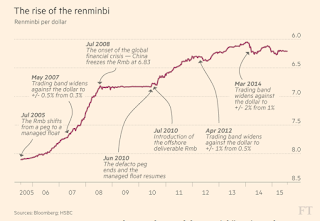Guru Speak on
Diversification
|
Here is what five investment gurus
tell about portfolio diversification:
Benjamin
Graham: He was considered the father of value investing. He
said, “That there should be adequate though not excessive diversification. This
might mean a minimum of ten different issues and a maximum of about thirty.”
Benjamin Graham further suggested
that an individual investor should never have less than 25 per cent or more
than 75 per cent of his funds in common stocks, with a consequent inverse range
of between 75 per cent and 25 per cent in bonds. Graham suggested a 50-50
bond-stock allocation for many of the conservative investors even though this
50-50 mix looked like an oversimplified formula. Graham ignored other asset
classes – gold, real estate, etc. – saying he did not have the required
expertise in them.
Philip
A Fisher: Philip Fisher was a legendary growth-stock investor. He
was not a great believer in over-diversification. He stressed, “For individual
investors, any holding of over twenty different stocks is a sign of financial
incompetence. Ten or twelve is usually a better number. An investor should
always realize that some mistakes are going to be made and that she should have
sufficient diversification so that an occasional mistake will not prove
crippling.” However, Fisher warned that one must be alert to the danger of investing
in companies of a single industry.
John
Templeton: Philanthropist-cum-fund manager John Templeton was
renowned as one of the best investment managers in the 20th century.
He advocated diversification by company and by industry. He said, “There is
safety in numbers in stocks and bonds. No matter how careful you are, you can
neither predict nor control the future. So you must diversify.”
Warren
Buffett: The Omaha, Nebraska-based legendary investor Warren
Buffett does not believe in diversification. He says one should only invest a
lot of money in a few quality companies. “Diversification serves as a
protection against ignorance,” he avers. A major portion of his investments are
in a few companies – like, Coca-Cola, Gillette, Wells Fargo and American
Express.
David
Dreman: He suggested holding of 20 or 30 stocks across 15 or
more industries. He said that returns from individual issues will vary widely,
so it is dangerous to rely on only a few companies or industries.
|
My Personal Opinion
|
In
times of market crashes and crises, correlation among asset classes is
especially high as was proved during the global financial crisis in 2008, when
most of the major asset classes suffered heavy losses and asset allocation did
not provide the benefit expected of it. This is a major limitation of asset
allocation. During market meltdowns, it is extremely difficult to deflect the
downside risks.
The
asset allocation process is neither a silver bullet nor a magic wand. Even if
you follow asset allocation process meticulously, there is no guarantee that you
will be able to attain satisfactory results. Ultimately, asset allocation is
vulnerable to market gyrations. If and when markets do well, our portfolio
value also will outshine. If investor’s circumstances and market conditions
change, asset allocation also should undergo a change. Asset allocation is a
forward-looking process.
Diversification
is a useful concept in finance. However, owning more than 15 to 25 stocks in an
individual investor’s portfolio does not make sense. If one is extremely
intelligent and knowledgeable about financial markets and has the required time
and patience, one can hold a concentrated portfolio of 10 to 15 stocks as
suggested by Philip Fisher.
Insurance
companies have always thrived on the principle of diversification – they
collect premiums from a large number of people and companies but pay only to a
few. The total profits will exceed the total losses from insurance underwriting,
which is a long gestation business.
Future
is always almost uncertain. There is always a risk of losing our hard-earned
money. As human beings, we have to make intelligent choices about our financial
future. Being aware of the risks involved, we have to move forward with our
decisions.
As
our investment goals are varied, putting all our surplus money in a single
asset class is risky. For conservative and common investors, the time-tested
principles of asset allocation and diversification will, in all probability, provide
an adequate safety net in the face of adversity.
Depending
on your temperament, personal situation and available resources, you have to
choose your asset mix properly and diversify your investments carefully –
knowing fully well the limitations of asset allocation, your capacity and
ability to understand and gain knowledge of markets. Finally, the most precious
thing is to have a good night sleep!
Related: Understanding Asset Allocation 14Oct2012
- - -
Disclaimer:
The author is an investment analyst, equity investor and freelance writer. This
write-up is for information purposes only and should not be taken as investment
advice. Investors are advised to consult their financial advisor before taking
any investment decisions. He blogs at:





















































































































